Angel wing mushrooms (Pleurocybella porrigens) are a problematic wild species that closely resemble oyster mushrooms. There are some key differences to make it simple to differentiate them, but you have to be aware of them because making a mistake could be dangerous.
Angel wings are a subject of great controversy in the mushroom world. They are among the deadliest mushrooms, yet, folks have been eating them for centuries (or longer) and still do.
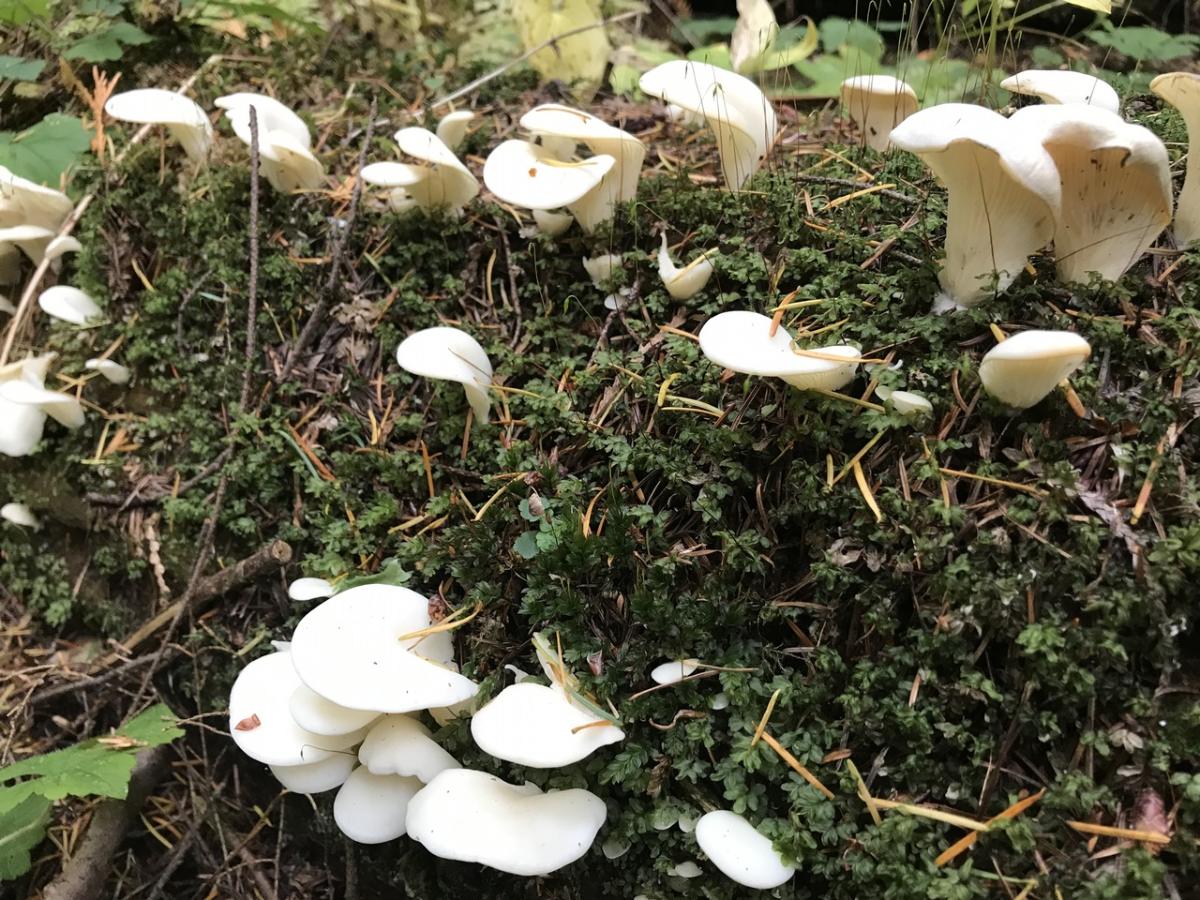
Pleurocybella porrigens by Kavanagh on Mushroom Observer
Older foraging guides in North America and around the globe list Angel wings as edible and good. But, more recent guides attach huge skull and crossbones to the species. Angel wings went from good eating to deadly in one month. How does that happen, and what’s the deal with these mushrooms?!
Jump to:
About Angel Wings
These controversial mushrooms grow on dead or dying conifer trees, logs, and stumps. They seem to particularly like eastern hemlock and appear in late summer through fall.
Up until 2004, this mushroom was foraged and considered a fine edible around the world. It grows in Asia, Europe, and North America. Angel wings were foraged regularly in all of these countries, either knowingly or as a presumed oyster mushroom species.
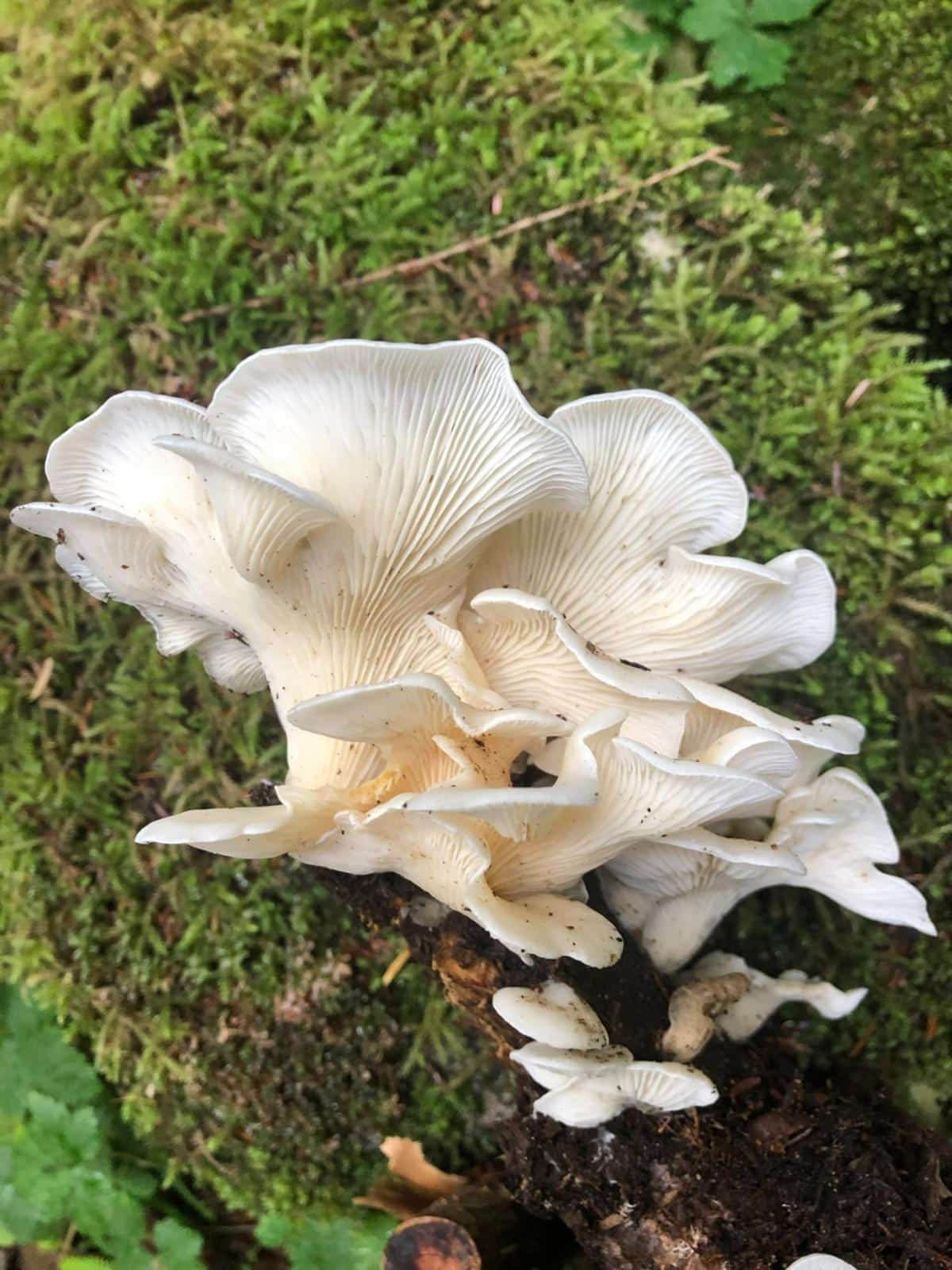
Pleurocybella porrigens by BareBearBearing on Mushroom Observer
Angel wing mushrooms were first described to science in 1805. It is part of a very small genus, with only five species in it. P. porrigens, the Angel wings, seem to be the most widely distributed and well-known of the genus. In Latin, porrigens translates to “stretching out” or “extending,” which describes how the caps look, like wings.
The Angel Wings Deaths, Controversy, and Ultimate Mystery
In 2004, 59 people in Japan got sick from eating Angel wings. Seventeen of the 59 died of acute encephalopathy – a degenerative neurological condition combined with internal damage, often to the kidneys or brain – in this case, brain lesions. The average age of the victims was 70, and nearly all of them had compromised kidney function.
Another death in Japan was reported in 2009. This victim of Angel wings was 65 and on kidney dialysis prior to eating the mushrooms.
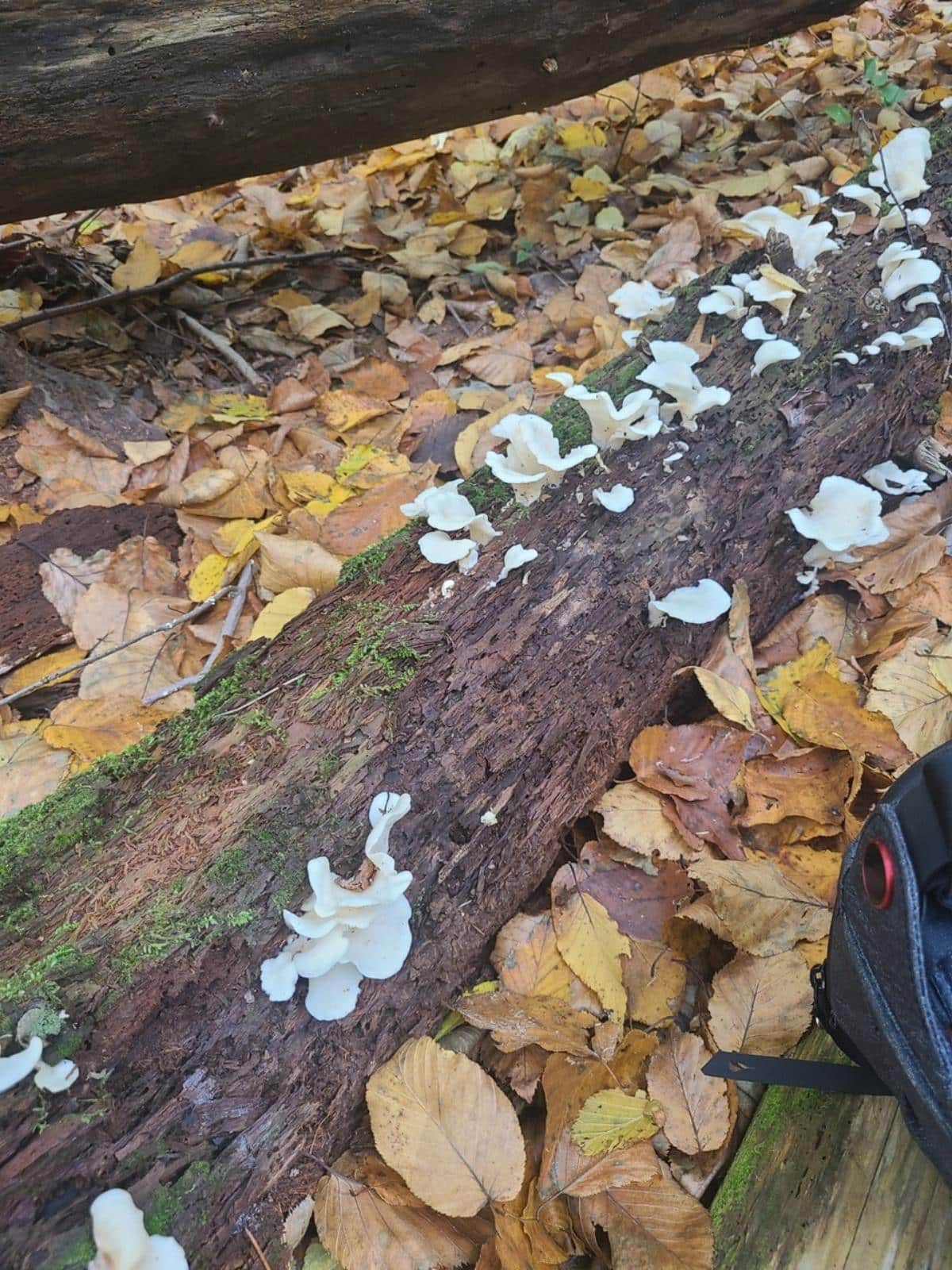
Pleurocybella porrigens by Angel on Mushroom Observer
Angel wing mushroom poisoning doesn’t present itself until 13-18 days after eating, and the symptoms include tremors, weakness in the extremities, seizures, and mental turmoil. A few days after the onset of symptoms, lesions appear on the brain, and death occurs around ten days after the beginning of the seizures.
Angel wings are an extremely popular edible mushroom in Japan (or, at least, they were!), and in 2004 record rains brought record harvests. People were eating the mushrooms in abundance, more than in previous years.
It is possible the excessive consumption of the mushrooms had an impact, or it could be the ages of the victims. For a very long time, it was just a mushroom mystery. Researchers were working on the puzzle but couldn’t narrow it down.
Then, in 2011, researchers discovered an unstable and unusual amino acid in Angel wings that they believe to be the cause. This amino acid is now named Pleurocybellaziridine. The amino acid may explain the toxicity, but there are still a lot of questions relating to how it works and if it even was the primary source.
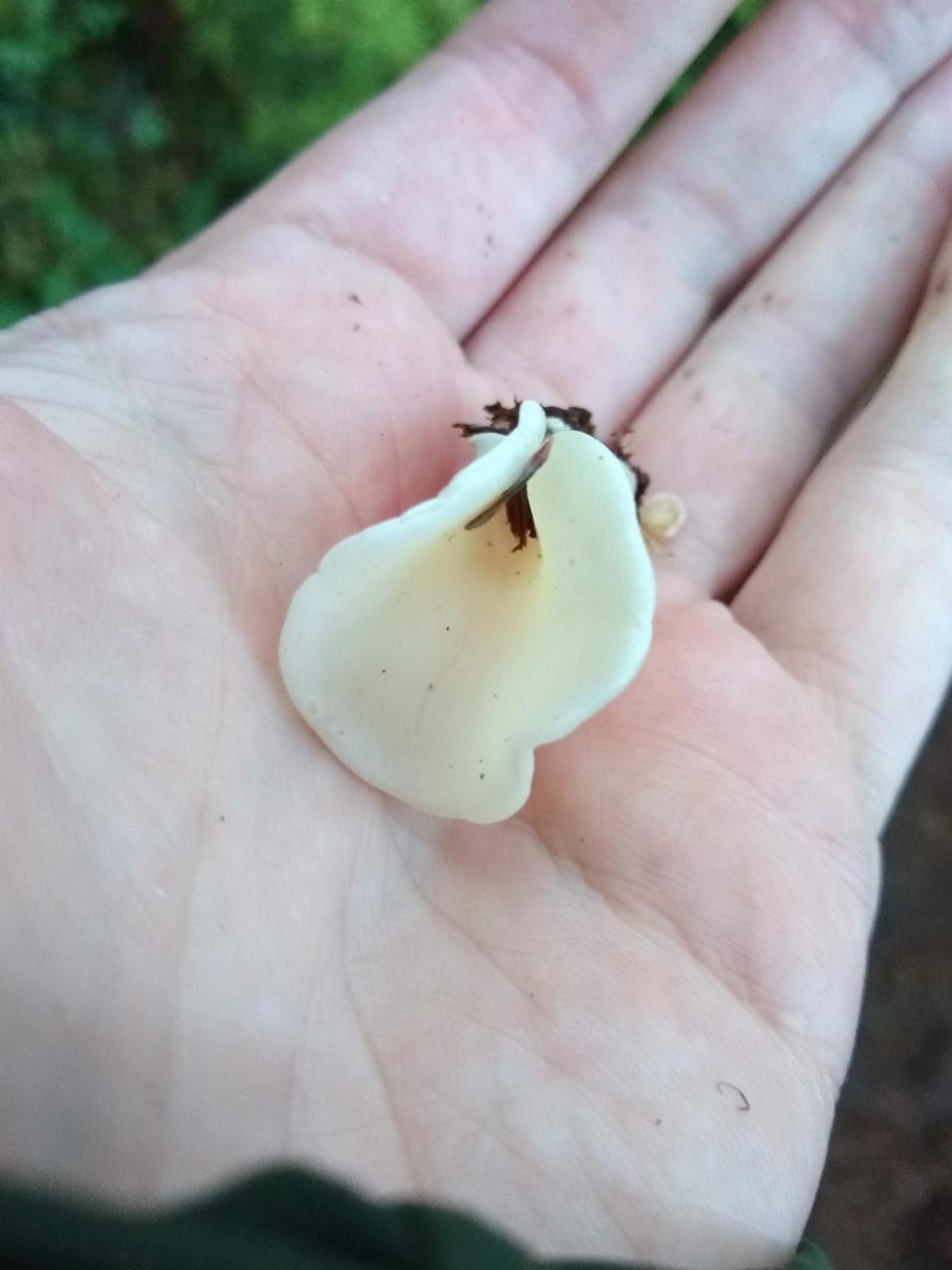
Pleurocybella porrigens by Mushroom Ranger on Mushroom Observer
So far, no studies have been done on this toxin’s effects on primate brains. Plus, it seems the toxin and concentrations are easily altered based on climate conditions and mushroom growth.
Researchers have raised some excellent questions, including:
- Were any studies conducted on the original Angel wing specimens from 2004?
- Does the toxin vary between collections? Between locations? Between years? From the different life stages of the mushroom? When it grows from different substrates (wood or types of wood)?
- Do all Angel wing mushrooms have the toxin? Do Angel wings in the US or Europe contain this toxin?
- Is the mushroom safe to eat in small quantities? Or, is it safe to eat if you are in good health without preexisting conditions?
- Why only one big toxicity epidemic and none since? It is certain people are still eating the mushroom.
The Angel wing poisoning event was unusual for many reasons, and not just because it happened once (or twice):
- Deaths due to mushroom consumption are rare – in North America, there is about one fatal mushroom event per year. An incident this big is extremely rare for any country.
- People have been eating these mushrooms (and still are!) without incident for centuries.
- Both known incidents happened in Japan.
Angel Wings Identification Guide
Season
Late summer into fall
Habitat
Angel wing mushrooms adore well-rotted conifer wood – they’re usually found on felled trees or stumps. They prefer shaded forests and mossy areas. These mushrooms grow in clusters, groups, rosettes, and singularly.
Identification
The overall appearance of Angel wings is quite like an oyster mushroom, especially if you’re inexperienced with foraging oysters. They are both white, have semi-circle caps that extend outwards, feature gills that go down the stem, and grow on dead or dying trees. That’s a lot of things in common!
In general, though, the cap shape is different, with the angel wings having more of a tongue or half-funnel shape – they tend to stretch up (like wings) while oysters stretch flat to look like an oyster shell. In the wild, though, it is impossible to predict exact growth because the outdoor circumstances may cause varied growth.
Angel wing mushrooms usually don’t have stems but may have a small stubby growth that attaches to the wood.
- Region: North America, widespread but may be more prevalent on the east coast
- Season: Late summer into fall
- Habitat: Conifer trees
- Size: Cap 1-4 inches across; the stem is absent or very stubby
- Shape: Semi-circle, often becomes funnel-shaped with an open end or like a tongue sticking out.
- Color: Ivory white
- Gills Color: Ivory white
- Outer Surface: Smooth
- Inner flesh color: White, unchanging
- Spore print: White
- Notes: The inner flesh is very thin
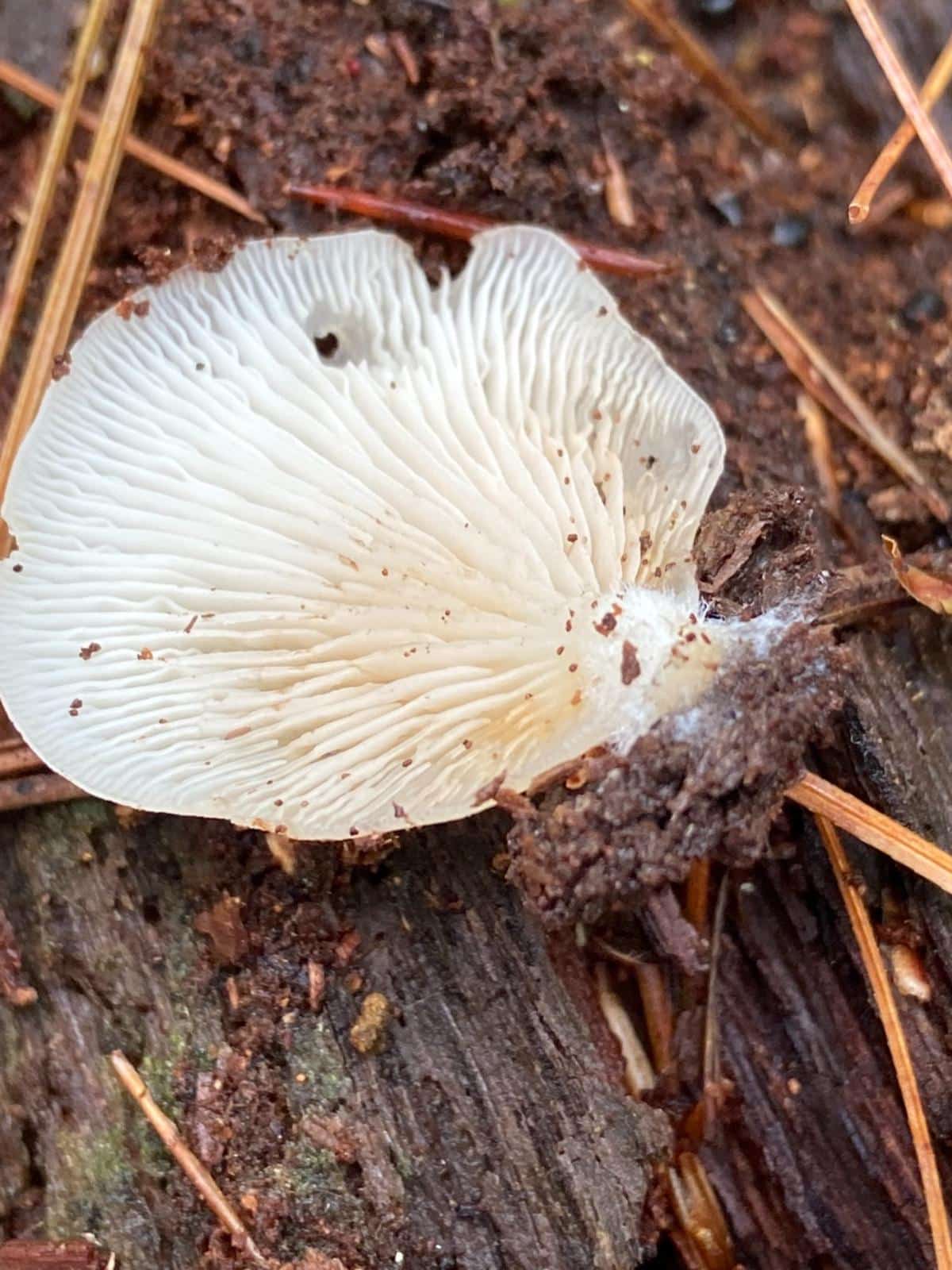
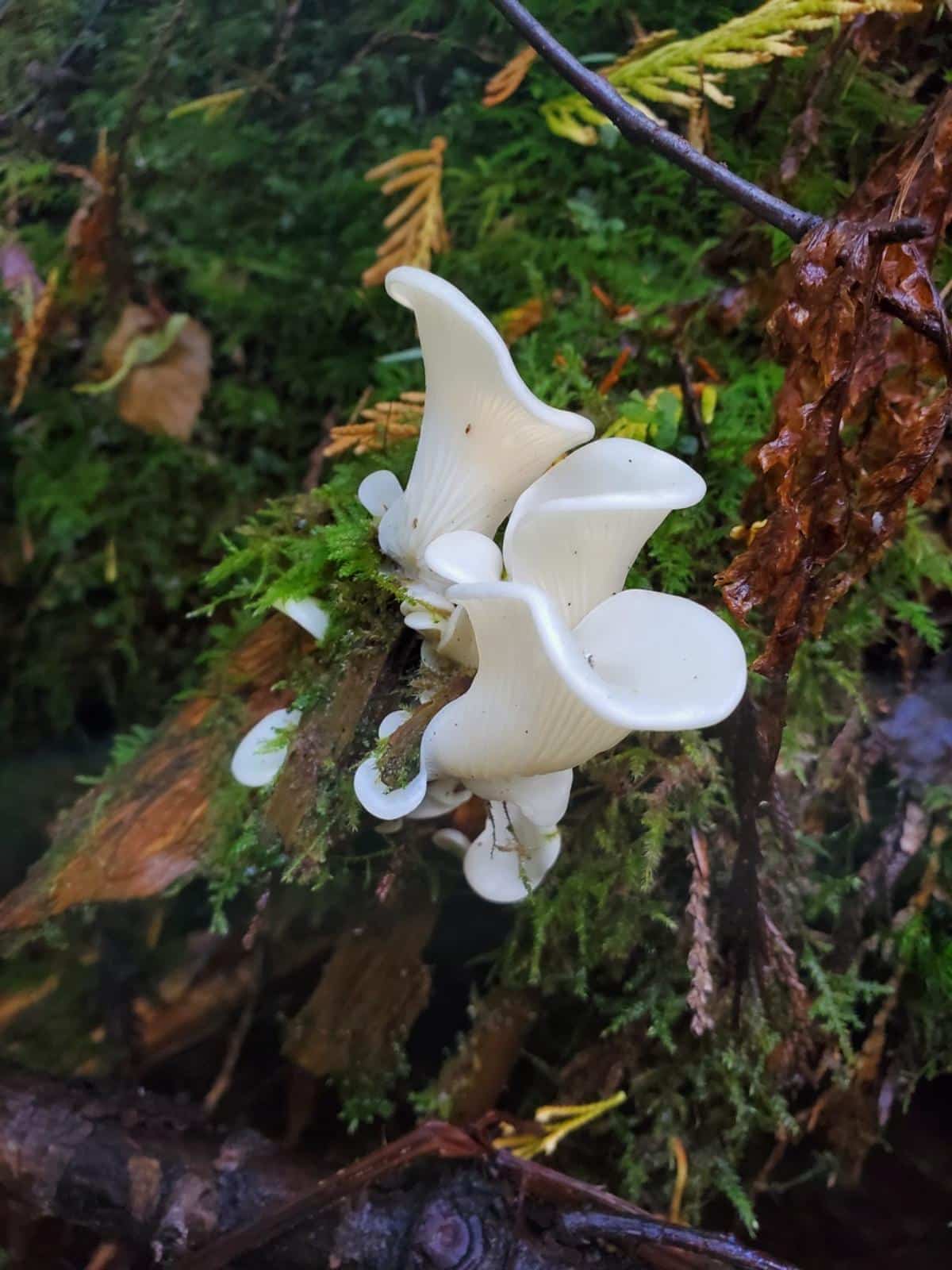
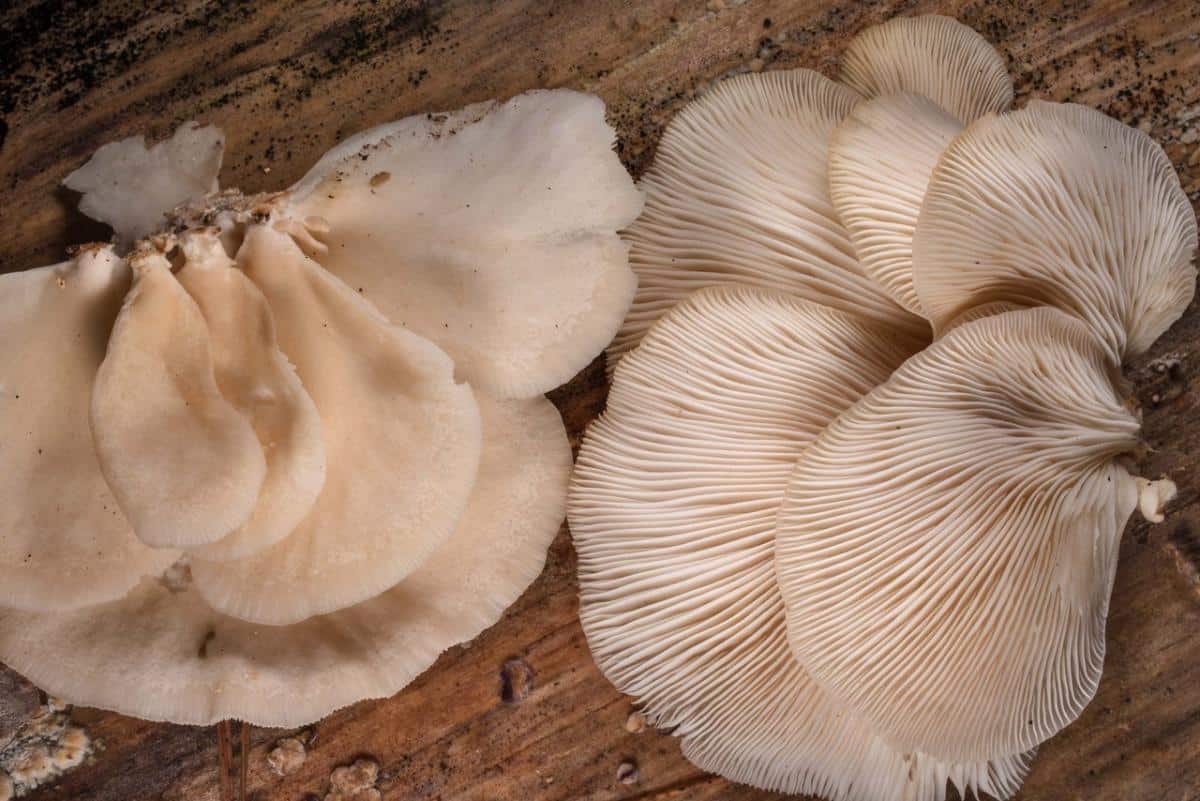
Angel Wing vs. Oyster Mushroom
- Angel wing flesh is very thin, while oysters have denser, meatier flesh
- Angel wings grow on conifer trees. Most oyster species grow on hardwoods in the wild (some oysters will grow on conifers in cultivation, but in the wild, they don’t prefer it).
- Oyster mushrooms have stems, though, in some species, they’re stunted. But, in general, they have a much more significant stem.
- Angel wings are very white, usually close to ivory white, while oysters are grayer or lilac-tinged.
- Oyster mushrooms smell like anise or fishy.
- The overall shape of Angel wings is more funnel-like, while oysters are more shell-like. This varies, though, depending on where they’re growing. These mushrooms are known to be very versatile and fluctuating as they adapt to their growing situations.
- Angel wings are significantly smaller than oyster mushrooms – young oyster mushrooms may be this small, but they won’t be for long.
- Angel wings have a white spore print. Oyster mushrooms have a grayish-lilac or white spore print.
- To learn more about oyster mushroom identification and foraging, consult our in-depth guide.
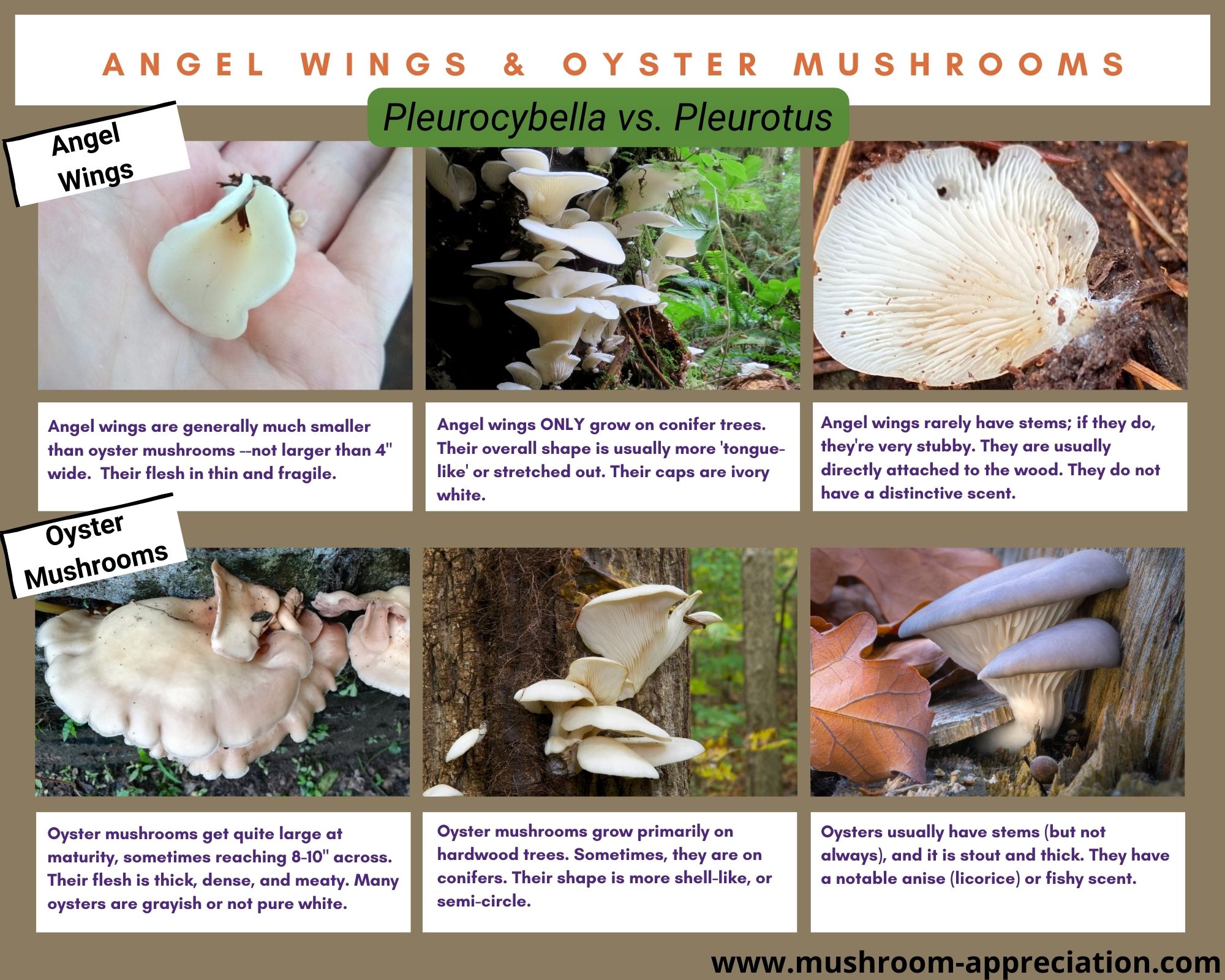
Foraging Angel Wings
I won’t say on this site either way what a person should do regarding this mushroom. Each person is responsible for doing their research and making an educated decision. No one has ever died or even gotten sick (as far as we know) from Angel wings in North America. Yet, 17 people dying is not something to be taken lightly.
So, do your research! Think about the risks you’re willing to take, and take responsibility for whatever actions you choose.
Common Questions about Angel Wing Mushrooms
How can I be sure I haven’t harvested Angel wings instead of oysters?
First of all, know your trees. That’s a huge step in identification. Conifer tree – use caution. Hardwood tree – probably fine. Go through the list above and do a spore print.
And, if you have any doubt, any whatsoever, don’t eat it. There is no reason to eat a mushroom that you aren’t sure about!
Was it really the Angel wings that caused the poisonings in Japan?
It is circumstantial, but also it’s entirely possible. Fifty-nine people getting sick at the same time indicates something was going on, and if the only thing in common was eating a specific mushroom, that’s a big red flag.





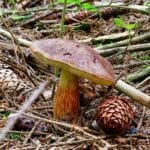
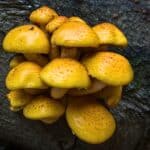
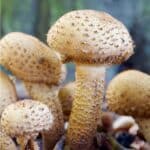
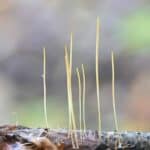
Kerry Sly
Hi I am a beginner and go out on occasion to identify mushrooms. today I found an Earth Ball (Scleroderma citrinum), Russula emetica and saw a few small 1″ – 3″ off white to tawny colored (almost dry) shelf like mushrooms that grew separately on old dead wood that was likely coniferous. Gills are white and there is no stem. They seem to be too flat to be Angel Wings. I would like to send a few photos to you for identification. Thanks
Jenny
Can you submit the photo to our facebook group – and make sure to read the announcements about what information is needed for a good id. I have an idea what it is but pics are necessary. Mushroom Lovers FB Group
matt dalby
It’s all a bit of a mystery. I’ve eaten angel wings in the UK (although in fairly small amounts) without any effects, I don’t have any pre-existing health conditions, and will do so again. I wonder if it’s possible that the mushrooms in the poisoning case had a rare bacterial infection which wasn’t killed with thorough cooking. Alternatively it’s possible that the victims also ate a different, very toxic, species but this fact wasn’t picked up on during the investigation into the deaths e.g. because uneaten angel wings were found in the homes of the victims but they’d eaten all of the toxic species and therefore left no evidence that it had be picked and eaten.
Jenny
Yeah, it’s still a mystery. Angel wings were a popular foraged mushroom there too and people had been eating them for centuries. The common hypothesis is actually that they just ate a lot more than normal and that in large amounts, they can be toxic. And pre- existing health conditions compounded the issue. Whether that’s accurate or not we may never know
Jane Kendall
I’m totally befuddled now – not sure if I have Angel Wings or Oysters. They seem so close in appearance. What I picked are growing on an ash log so I want to say oysters.
Jenny
Yes, angel wings grow on conifers — that’s a primary identification key
Carol Tran
Hi
I love to forage and eat wild mushroom, but I have no knowledge about them and I try to educate myself. Recently, I am hiking and found these beautiful mushroom that look alike Oyster mushroom, so I just pick them and hope that someone can identify or tell me if they are edible, and I choose your web site because your explanation is easy to follow, so I have pictures of the mushroom, could I send them to you for id for me please? Thank you
Carol
Jenny
I’d glad you find the site helpful! Please put any ID requests in our facebook group. Make sure to read the pinned/featured post and include all the necessary info https://www.facebook.com/groups/340690111324762